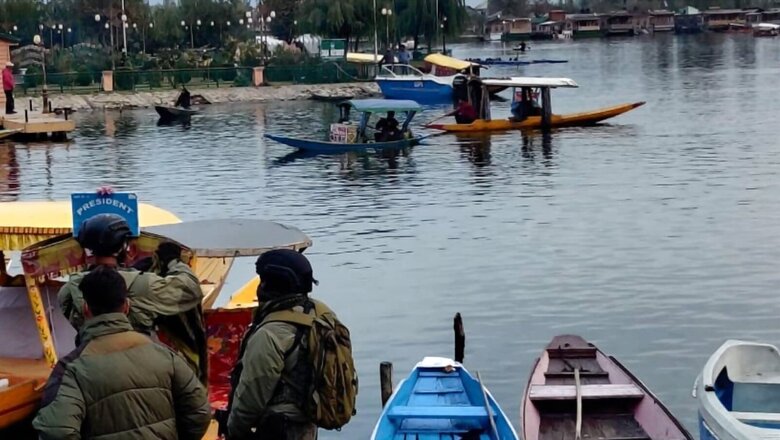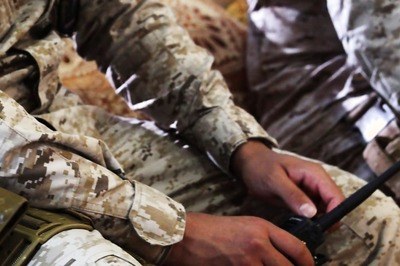
views
American philosopher George Santayana once said, “Those who cannot remember the past are condemned to repeat it.” Anyone who reckons the exodus of Kashmiri Pandits or Kashmiri Hindus, one of the oldest living indigenous communities in India, in 1990 as the first such incident is gravely mistaken. Perhaps, they are being evasive about historical facts and data. This was the seventh—and the ‘last one’, they say.
However, one is not sure how long the ‘last’ of such inhuman, loathsome and macabre ‘onslaught’ on minorities will last in the Valley.
As far as the timeline goes, it is noteworthy to mention the first exodus took place as early as the 14th century with the ingress of Islam around 1389-1413; the second exodus took place around 1506-1584, third during 1585-1752, fourth in 1753. While the fifth exodus took place around 1931-1965 and the sixth in 1986, the last (also the most ghastly) and apparently the final exodus of Kashmiri Hindus took place on the midnight of January 19, 1990.
Once again, Kashmir has returned to ‘normal’. Five Hindus, a minority community in Kashmir, were slaughtered in daylight in the name of Islamic Jihad. We need to dig deeper and go beyond the rhetoric of propagandists to uncover the real face of ‘Kashmiriyat’. Supinder Kaur, a school principal, was killed point-blank by terrorists because she did not belong to the majority Muslim community.
Many Hindu families are now fleeing Kashmir, prompting comparisons with the 1990 situation. The targeted killings have also called into question the government’s assertions of tranquility. These killings occurred while 70 Union ministers took turns to visit Kashmir.
As Hindus, also called Kaafirs (non-Muslims), are being killed in a Muslim-dominated region, what adds salt to our wounds is the apathy of the anti-India forces, who refuse to recognise this injustice. Instead, such killings are justified and the perpetrators are shielded as ‘son of a school teacher’ and what not.
Jihad is a never-ending battle. While bloodshed takes place in Kashmir, western media continues to provide Hinduphobic columnists access to sell bogus narratives, like India is on the verge of committing ‘anti-Muslim genocide’. In Jammu and Kashmir and states like West Bengal, Assam, Bihar, Jharkhand and Kerala, there are pockets that witness continuous Islamist violence, forced conversions and misogyny, but ‘surprisingly’ the perpetrators enjoy the patronage of the same selectively vocal media in obliterating these ‘run-of-the-mill’ stories.
The killing of one Muslim man in a police firing on a mob of miscreants in Assam, although equally tragic and grisly, becomes the catalyst for the entire cabal to foresee “genocide”. There are also a few one-sided conjectures and hypotheses. Most are ludicrous at best, ridiculous at worst.
Former Prime Minister Atal Bihari Vajpayee had famously said that militancy and secession were never about ‘Kashmiriyat’, ‘Insaniyat’, or ‘Jamhooriyat’ as the secular ‘commentariat’ argues. It was always about creating Dar-ul-Islam, or Islamic rule, and breaking away from India’s secular, Hindu-majority democracy.
Despite the efforts to make Kashmir a safe place for all religions, there’s little to no sign of any positive impact. As the Kerala Governor says, when the Constitution guarantees equal rights, why should ‘special rights’ be offered to any particular religion on the basis of majority-minority politics? Perhaps, this boils down to the reality in Kashmir and now even Kerala. And, it is time to ask some hard questions.
1. When India is a secular country, why do we need to provide special treatment to any religion?
2. Why did fewer people attend the funeral of Dr APJ Abdul Kalam when enormous crowds gathered for terrorists like Burhan Wani?
3. Why does the advertisement for a detergent brand show that a kid from the Islamic community is scared of colours during the festival of Holi—but he is not scared of the goat-slaying during Bakri Eid?
4. If Sharia requires Muslims in India to have a ‘Muslim Personal Act’ for civil laws, why not apply Sharia, especially for Muslims, in criminal cases too, instead of the Indian Penal Code?
5. Why is Burqa/Niqab a choice while saree is shown by mainstream media as a sign of oppression?
6. When the Azaan is played over loudspeakers five times a day and the words ‘La IlahaIllallah’ (لاإلهإلاالله) or ‘There is no god but Allah’ are declared, doesn’t that hurt the sentiments of other religions? If that isn’t compromisable, why do other people need to be secular?
7. When Islamist invaders first arrived in this country, they desecrated temples, massacred people and destroyed the civilizational achievements of this land, all due to the teachings of their holy book. The book hasn’t changed, so why would the current followers of the same book be any different from the barbarians who plundered this nation in the past?
8. Is discussing such questions Islamophobia, or is blanketing such questions the real Islamophobia?
9. Most importantly, nearly half of the countries globally are either Muslim or Christian states, with even Buddhism being the dominant faith in six countries. Why is the demand for a Hindu country being frowned upon? Even after the division of the beloved motherland of Hindus, why do other religions want special provisions in the leftover piece of land Hindus have?
“Raliv, Galiv, Chaliv” isn’t a one-off slogan used in Kashmir. Unless the answers to the above questions are found, there’s no solution to Jihad in Kashmir. Kashmir is but an example of what will continue to get replicated across the length and breadth of India if these questions are left unanswered. The international community too has been facing and witnessing the menace of ‘Jihadi Terror’, the ‘humanitarian crisis’ it causes—Afghanistan being the latest example.
The future of humanity depends on how well and how early this situation is dealt with. It only took a few days to nullify an investment of trillions of dollars and decades’ worth of humanitarian work in Afghanistan. Unless we do not recognize the perils of staying blind to this menace, Jihad will be democratized as a tool to take humanity back to the Stone Age in and beyond Kashmir.
Yuvraj Pokharna is an engineer turned educationist and social activist from Surat. The views expressed in this article are those of the author and do not represent the stand of this publication.
Read all the Latest News , Breaking News and IPL 2022 Live Updates here.



















Comments
0 comment